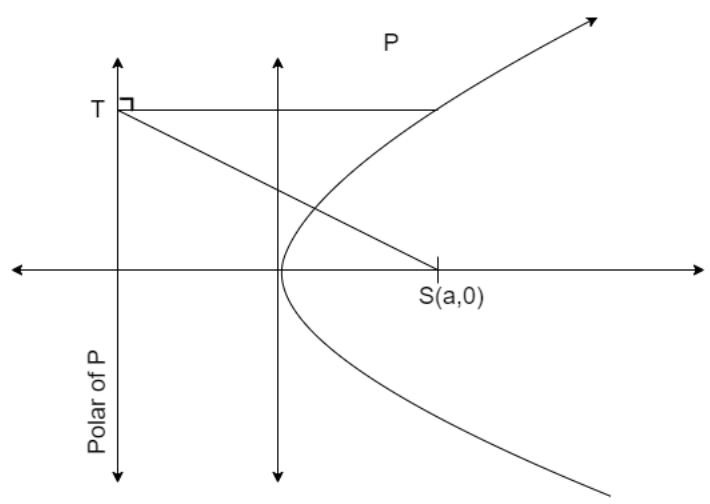Question
Question: If the perpendicular is let fall from the point P on parabola upon its polar. Prove that the distanc...
If the perpendicular is let fall from the point P on parabola upon its polar. Prove that the distance of the foot of this perpendicular from the focus is equal to the distance of point P from its directrix.
Solution
The rough figure drawn based on the given information is

We assume that equation of parabola as y2=4ax then equation of directrix is given as
x+a=0 then we assume that point P as (h,k) to find the polar of point P with respect to parabola S≡y2=4ax given as S1=0 where
S1=yk−2a(x+h)
Then we find the foot of perpendicular of point P(h,k) to its polar ax+by+c=0 given as
ax−h=by−k=a2+b2−(ah+bk+c)
Then we find the distance between focus ‘S’ and foot of perpendicular ‘T’ using distance formula that is the formula of distance between (x1,y1),(x2,y2) is given as
ST=(x2−x1)2+(y2−y1)2
Then we find the distance of point P to the directrix using perpendicular formula that is the distance of P(h,k) to line ax+by+c=0 is given as
D=a2+b2∣ah+bk+c∣
Complete step-by-step solution:
Let us assume that the equation of parabola as
⇒y2=4ax
Let us assume the point P as P(h,k)
We know that the equation of polar of point P with respect to parabola S≡y2=4ax given as S1=0 where
S1=yk−2a(x+h)
By using the above formula we get the equation of polar of P as
